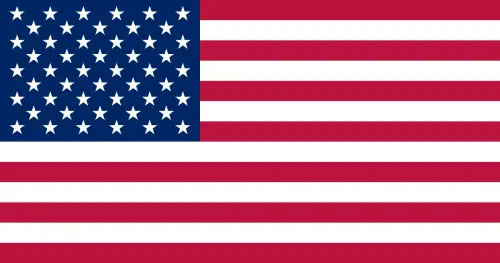Holi is one of the most vibrant and joyous festivals celebrated in India and Nepal. Known as the “Festival of Colors”, Holi signifies the arrival of spring, the triumph of good over evil, and a time for people to come together in love and harmony. It is a festival that transcends barriers of caste, creed, and social status, uniting people through the playful throwing of colors, music, and traditional festivities.
1. Significance of Holi
Holi has deep cultural, religious, and seasonal significance:
A. Mythological Significance
1. The Legend of Prahlad and Holika
- According to Hindu mythology, Holi is linked to the story of Prahlad, a devoted follower of Lord Vishnu.
- Prahlad’s father, King Hiranyakashipu, was a tyrant who wanted to be worshiped as a god. However, Prahlad refused to obey his father and continued to worship Lord Vishnu.
- Hiranyakashipu, enraged by his son’s devotion, decided to kill him.
- He sought the help of his sister, Holika, who had a boon that made her immune to fire.
- Holika tricked Prahlad into sitting on a pyre with her, thinking she would be safe while he would burn. However, due to divine intervention, Holika burned to ashes, and Prahlad was unharmed.
- This event symbolizes the victory of good over evil and is commemorated by Holika Dahan, the bonfire ceremony on the night before Holi.
2. The Legend of Radha and Krishna
- Another popular Holi legend comes from the life of Lord Krishna.
- As a child, Krishna was jealous of Radha’s fair complexion since he had a dark skin tone.
- His mother, Yashoda, playfully suggested that he smear Radha’s face with color so they would look the same.
- Krishna did so, and it became a tradition, symbolizing love, mischief, and togetherness.
- In Mathura and Vrindavan, Holi is celebrated with flowers and colors in honor of Radha and Krishna.
B. Seasonal & Social Significance
- End of Winter & Beginning of Spring – Holi marks the transition from cold winter to warm spring, symbolizing renewal and new beginnings.
- Agricultural Importance – It coincides with the harvest season, especially for wheat and barley, bringing joy to farmers.
- Breaking Social Barriers – Holi is a time when people forgive past grievances, forget social differences, and celebrate together, reinforcing unity and love.
2. When is Holi Celebrated?
Holi is observed on the full moon day (Purnima) of the Hindu month of Phalguna, which usually falls in March. The exact date varies each year based on the lunar calendar.
3. How is Holi Celebrated?
Holi is a two-day festival:
A. Day 1: Holika Dahan (Chhoti Holi)
- On the night before Holi, people light a bonfire, known as Holika Dahan, to symbolize the burning of evil (Holika) and the victory of good (Prahlad).
- People gather around the fire, sing bhajans (devotional songs), and offer wheat, coconut, and other grains to the flames.
B. Day 2: Rangwali Holi (Dhulandi)
- This is the main day of celebrations, where people play with colors, water balloons, and pichkaris (water guns).
- Friends, family, and even strangers smear gulal (colored powder) on each other.
- Streets are filled with music, dance, and joyous celebrations.
- People visit each other’s homes, enjoy sweets, and greet each other with “Happy Holi!”
4. Holi Traditions Across India
Holi is celebrated differently in various parts of India:
A. Lathmar Holi (Barsana & Nandgaon, Uttar Pradesh)
- In Barsana (Radha’s village), women playfully beat men with sticks (lathis) while men try to protect themselves with shields.
- This reenacts the playful teasing between Radha and Krishna.
B. Phoolon Ki Holi (Vrindavan, Uttar Pradesh)
- In Vrindavan’s Banke Bihari Temple, Holi is played with flowers instead of colors as a tribute to Lord Krishna.
C. Holla Mohalla (Punjab)
- In Punjab, Holi is known as Holla Mohalla, where Sikh warriors showcase martial arts, horse riding, and mock battles.
D. Dol Jatra (West Bengal)
- In West Bengal, Holi is celebrated as Dol Jatra, where idols of Lord Krishna and Radha are carried on decorated palanquins.
- People sing Rabindra Sangeet (songs by Rabindranath Tagore) and play with abir (dry colors).
E. Shigmo (Goa)
- Goa’s version of Holi, celebrated by farmers and fishermen, includes parades, folk dances, and street performances.
5. Special Foods & Drinks of Holi
Holi is incomplete without delicious festive treats:
- Gujiya – A sweet dumpling stuffed with khoya (reduced milk), nuts, and sugar.
- Thandai – A cooling drink made with milk, saffron, dry fruits, and spices; often mixed with bhang (cannabis).
- Dahi Bhalla – Soft lentil dumplings soaked in yogurt and topped with tamarind chutney.
- Malpua – A deep-fried pancake soaked in sugar syrup.
- Puran Poli – A traditional Maharashtrian sweet flatbread stuffed with jaggery and lentils.
6. Modern-Day Holi Celebrations
Holi has gained global recognition and is celebrated in many countries, including the USA, UK, Canada, Australia, and Nepal, where Indian communities organize color festivals.
However, modern celebrations also bring concerns:
- Synthetic Colors – Chemical-based colors can cause skin and eye allergies. Many people now prefer organic, herbal colors.
- Water Wastage – Holi involves water balloons and pichkaris, leading to excessive water consumption. People are encouraged to celebrate dry Holi.
- Consent & Respect – It is important to ensure that everyone enjoys Holi willingly without forceful color application.








